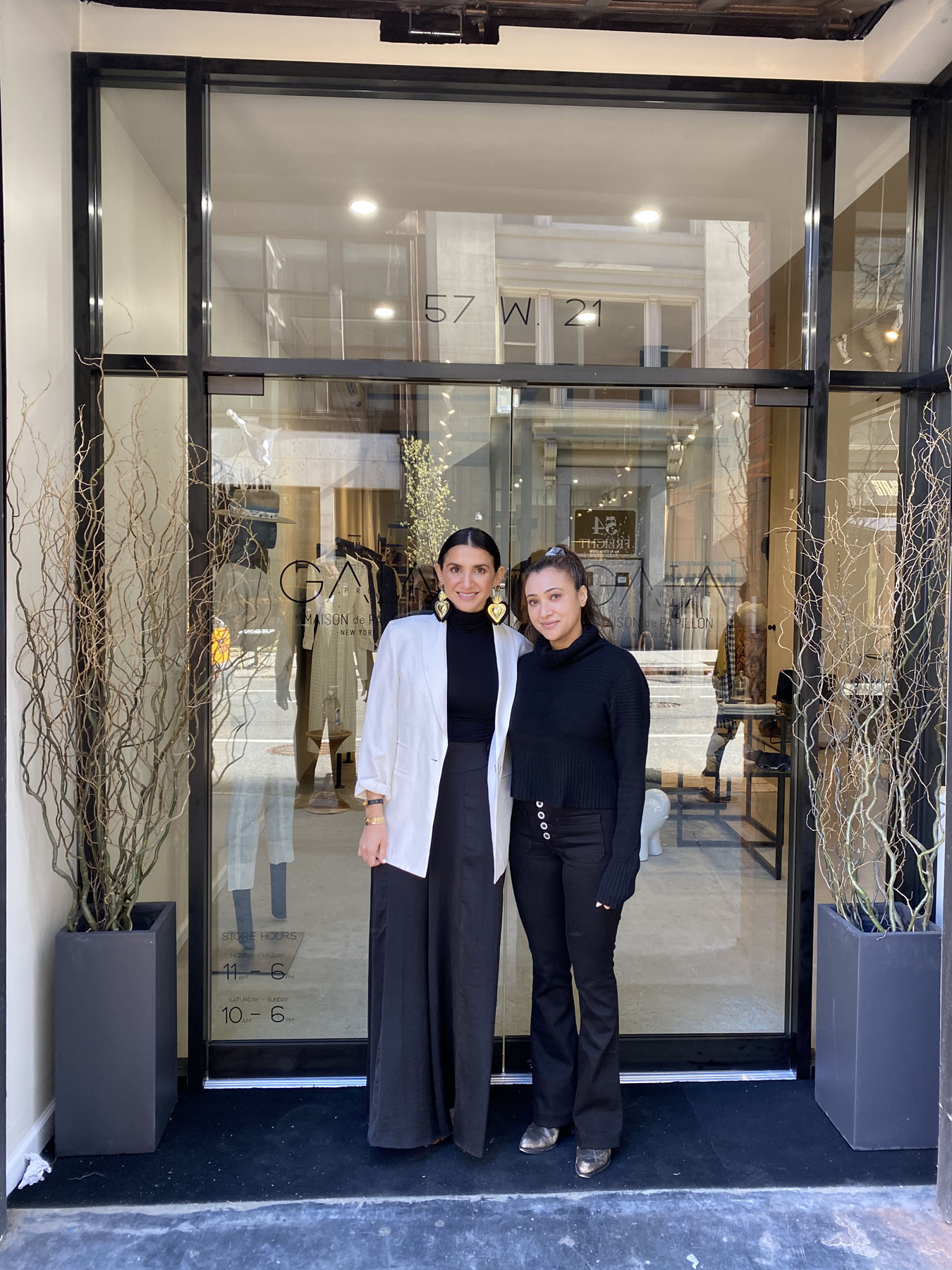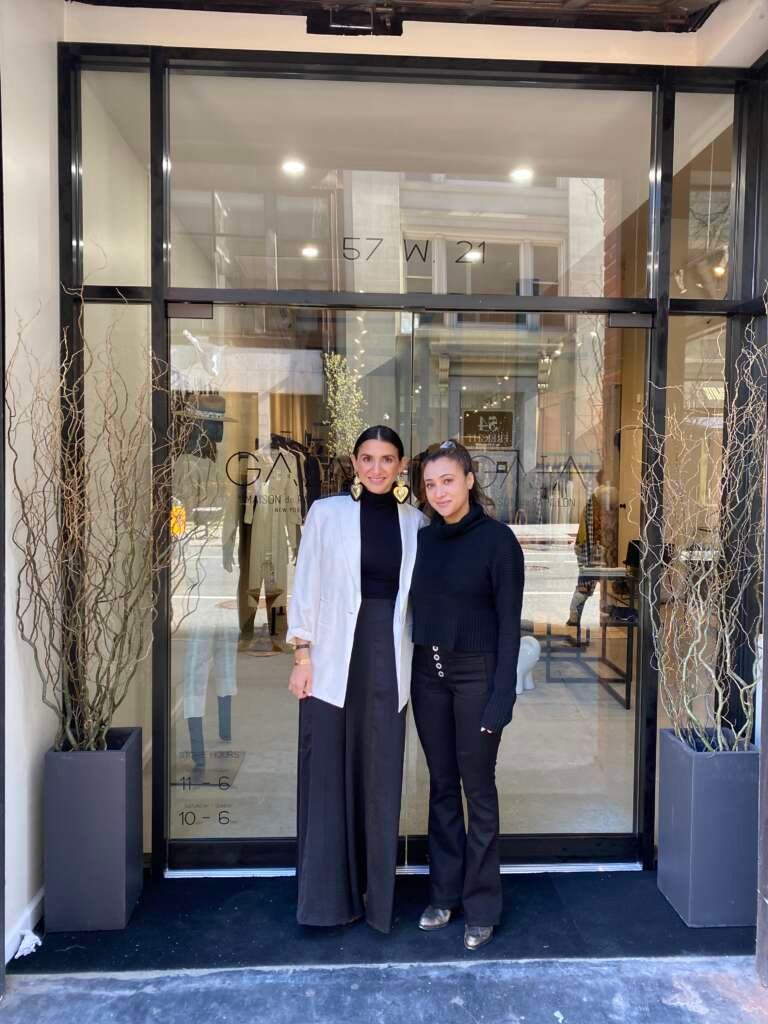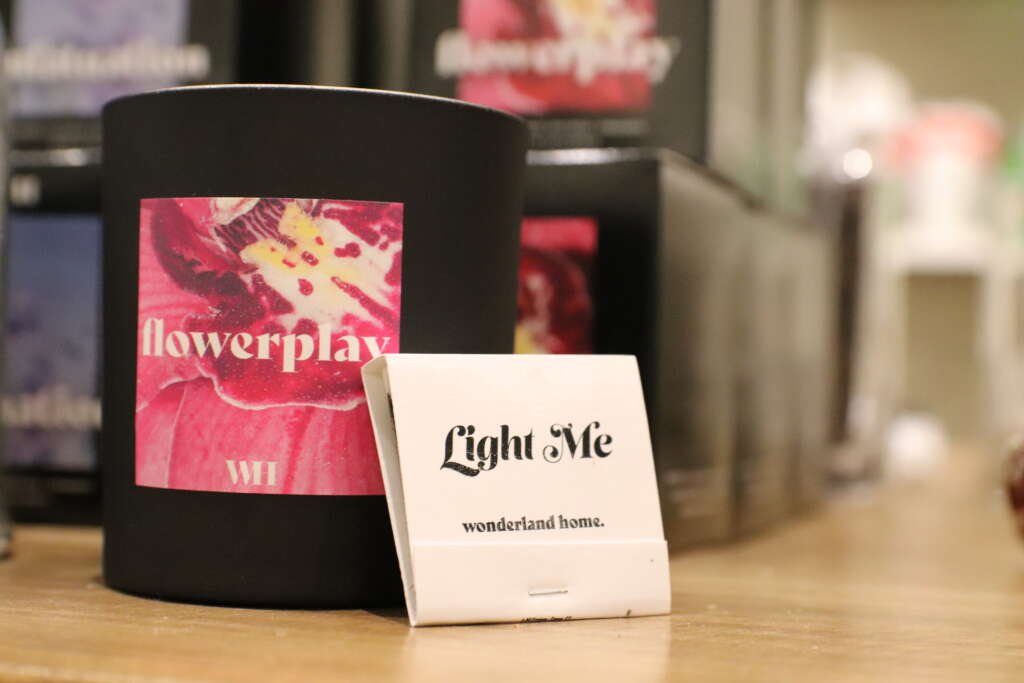#ShopWithPurpose at Project Gaia NYC

Share This Article
| All products featured on The Wellness Feed are independently selected by our editors for its environmental and ethical impact. However, when you buy something through our retail links, we may earn an affiliate commission. |
Community. It was one of the first words that designer and Project Gaia NYC co-founder Danielle Salinas said when I walked into the 3,000 sq foot multi-brand concept store. As we toured the space, she walked me through each story behind the 50+ brands and artists that she and co-founder Shriya Bisht Misra hand picked. Both are designers themselves, Shriya and Danielle met while studying at Parsons and transitioned their friendship into a business partnership as the designers behind the eco-responsible luxury apparel brand, Maison de Papillon.
Monica Vinader x Mother Of Pearl Debut A Sustainable Collection
When the pandemic disrupted the fashion industry, the two women not only focused their energy on keeping their own brand afloat, but also on helping other brands do so as well. “One of the biggest challenges for us when we started the brand was breaking into New York City. So, we wanted to give brands that lost their homes… a place to come and display what they had,” she explains about the original idea for Project Gaia NYC. “And, every single brand in the boutique has a sustainable aspect to it.”

Building An Intentional Community
From swimsuits made from recycled nylon sourced from ocean plastic waste to handbags that protect the garment workers making the designs, Project Gaia NYC is a community of brands making a positive impact. As Danielle walks and talks, it’s apparent that she has paid close attention to the story and ethos of each brand. She gushes over sunglasses that have an empowering message to them. They’re handmade in Greece and were founded by a designer who switched careers after working in the military. She enthusiastically discusses the ingredients in Mabel’s line of industrial-strength 100% organic plant-based cleaners. She invites me to take in the notes from her favorite scents from Strangelove NYC and Chris Collins, two fragrance brands whose plant-based ingredients are sustainably sourced.
This is a beautifully curated collection of artisans and designers crafting items to be used and loved for a long time. Yet, the biggest takeaway from this sustainable duo is that they aren’t building one of those sustainable stores that gets off on buzzwords. Project Gaia NYC’s brands aren’t just sustainable or organic or local. Yes, the design duo do make a point of uplifting and creating a space for local New York brands or ethically made-organic wares, but more importantly these brands are doing the leg-work to offer their customers products they can feel good about from multiple standpoints. And, Danielle and Shriya do the hard work to find out how these brands are supporting these claims.

The Many Sides Of Sustainability
“Sustainability has so many different facets.” Danielle says. Asking how a brand is sustainable is a question that the duo had to ask themselves while building their own brand and relationships with others. They admit that it doesn’t have one straight answer. To them there are many different answers when it comes to the sustainable initiatives a brand will take. “It’s about being conscious,” Shriya explains. “Maybe, they [a brand] needs to use plastic. But, are they using recycled plastic? We might also ask if they’re thinking about replacing the plastic in the future with biodegradable options.” Shriya told me about a recent conversation they had with a brand.
Here’s What To Know About New York’s Sustainable Fashion Act
Other sustainable conversations revolve around ingredients in perfumes or skincare lines, materials, dyes, the labor chain and learning how a brand transports materials to reduce their carbon emissions. Instead of looking for one answer, Shriya explains that they’re looking for brands that have already asked some of these questions themselves in an effort to balance out economics and their environmental impact. A brand might have to use the plastic packaging because of cost, but could balance it out by using organic cotton or planting trees to offset their carbon footprint. “It’s about knowing your responsibility and the impact,” Shriya says.
“As long as we all have good intentions to do things better, that’s what sustainability is,” Danielle explains. As designers for their womenswear label Maison de Papillon, these are all questions that they have asked throughout their own supply chain. They know how their raw materials are sourced, what dyes are used and the materials used in their compostable mailers. Recently, Danielle explains, “We’ve calculated our carbon footprint to learn what we’re doing and how we can be better.” This allows the duo to make calculated improvements that balance economics with environmental impact.

Sustainable Choices Do Make A Difference
Shaming brands is not a part of the Project Gaia NYC ethos. While they might turn away brands they feel aren’t the right fit for the community they’re building, they will ask questions and offer guidance first. That is also how they make a difference, by showing, not shaming people how to be a part of the sustainable community. “Now brands are like, the next time we’re going to use recycled packaging,” Danielle says.
Elsewhere, Project Gaia NYC also embraces recycling by collaborating with designers to sell and use what they have in stock. Danielle points out how last season’s fabrics are reworked into this season’s new designs and old stock is given a fresh new approach. In a city that thrives on fast paces and an out-with-the-old mentality, Project Gaia NYC aims for a slower-yet-steady pace to appreciate the beauty that’s before us now, so that it can also be enjoyed by future generations. And, whether that’s by brands choosing recycled packaging or organic materials, that’s how sustainability can make a difference.
